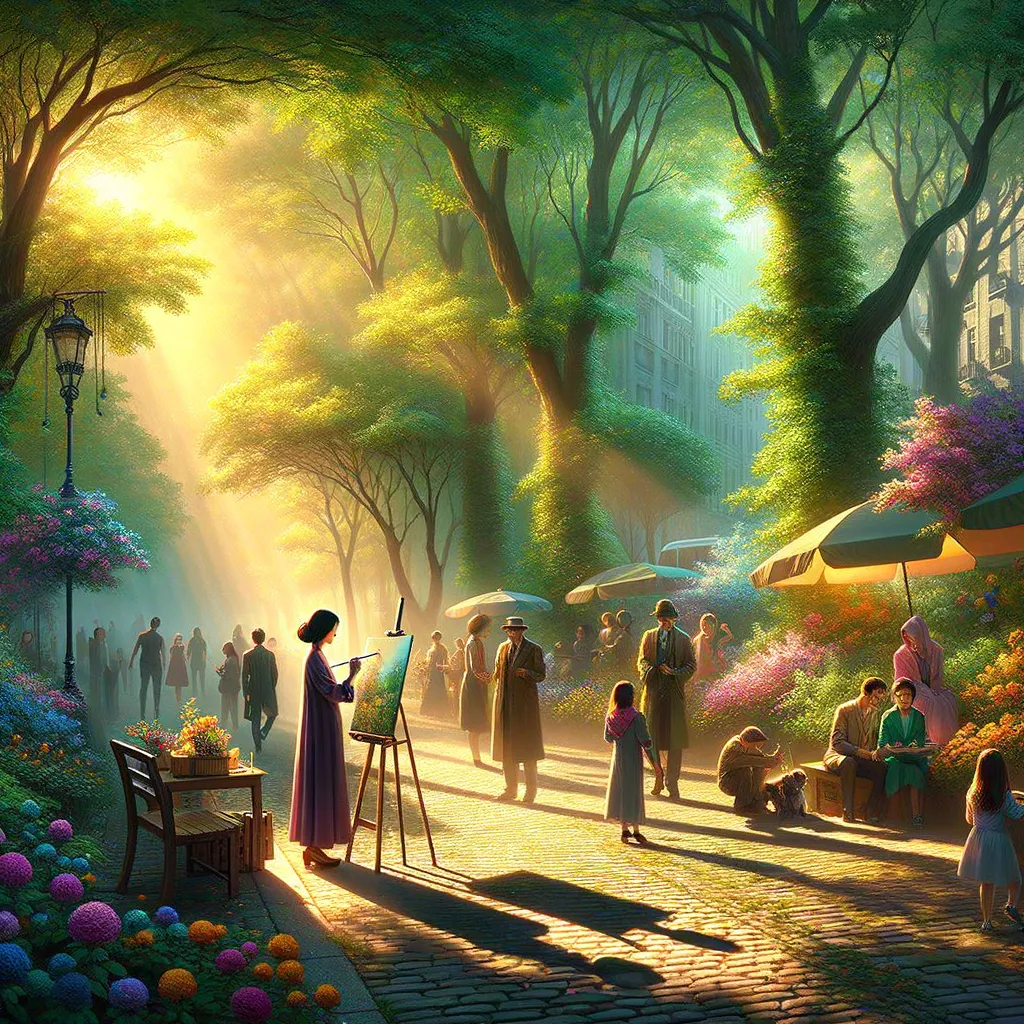Unveiling VR: A Journey into Connection and Discovery
In a bustling café, the scent of coffee mingled with the vibrant colors of autumn, yet a small VR headset held the promise of an extraordinary adventure. As the device enveloped reality, a breathtaking digital landscape unfolded, transforming the mundane into the magnificent, igniting a sense of wonder and possibility. Each exploration revealed not just thrilling experiences, but also a profound understanding of how this technology could bridge divides, fostering empathy and connection in ways previously unimaginable. However, beneath the excitement lurked a cautionary whisper about the delicate balance between the tangible and the virtual, urging reflection on authenticity and the essence of human interaction. As the headset was removed, the heart resonated with the realization that while technology opens new realms, it is vital to preserve the warmth of genuine connection that defines humanity.
In the memory of September 29, 2016, I stood in a bustling café, the aroma of fresh coffee swirling with the chatter of patrons and the soft clinking of cups. Outside, the world was painted in the vibrant hues of autumn, leaves dancing whimsically in the breeze. Yet my mind was captivated not by the scenery, but by the tiny device nestled in my palm—an unassuming VR headset. At that moment, I was on the precipice of a technological revolution, unaware that I was about to step into a realm that would redefine the very essence of human experience.
As I slipped the headset over my eyes, reality faded, replaced by an immersive landscape where the ordinary became extraordinary. I stood on the edge of a cliff, the digital wind ruffling my hair, the ocean crashing against the rocks below. Each wave felt real, each breath of virtual air a reminder that technology had become a vessel for our wildest dreams. In that surreal world, I began to ponder the profound implications of this technology, not just for entertainment, but for education, empathy, and beyond.
What surprised me was the visceral connection I felt to a simulated environment. Here, I was not merely a spectator; I was a participant in a story that unfolded around me. I could explore ancient ruins, walk alongside dinosaurs, or even dance with the stars. The possibilities seemed endless, yet the deeper realization was how this technology could bridge gaps—geographical, emotional, and even cultural. Suddenly, the world felt smaller, more intimate, as I considered how VR could foster understanding in ways traditional media could not.
The applications were as diverse as the experiences themselves. Imagine a classroom where students could journey through history, witnessing events as they unfolded, or a hospital where patients could escape their fears through serene landscapes. The more I explored, the more I recognized that VR was not just a tool for escapism; it was a medium for connection, understanding, and healing. It was a canvas upon which humanity could paint its collective story, uniting us in our shared experiences.
Yet, in the midst of this revelation, a pang of caution tugged at me. The allure of virtual reality brought forth questions about authenticity and isolation. As we delved deeper into these digital realms, would we risk losing touch with the richness of the tangible world? Would we forget the warmth of a shared smile or the comfort of a gentle touch? The tension between the real and the virtual began to weave itself into my thoughts, a reminder that while technology can elevate our experiences, it can also obscure the simplicity of human connection.
With each passing moment, I found myself questioning not only the implications of VR but also its ethical dimensions. Who controls the narratives we experience? How do we ensure that these virtual spaces are inclusive and equitable? The potential for manipulation loomed large, and I realized that the responsibility lay not just with the creators but with all of us who would immerse ourselves in these alternate realities. As the digital landscapes expanded, so too did the ethical conversations surrounding them.
Time slipped away unnoticed as I removed the headset, the café returning to focus, a stark contrast to the vivid world I had just inhabited. The realization struck me that this technology was just the beginning. The future promised even more astonishing advancements—holograms, brain-computer interfaces, and beyond. Each leap forward could amplify our connections or, conversely, deepen our divides. The path forward was paved with both excitement and uncertainty.
In the days that followed, I shared my experience with friends and family, their reactions a mix of awe and skepticism. Some marveled at the possibilities, while others expressed concerns about an increasingly digital society. Each perspective added layers to my understanding, revealing how deeply personal and subjective our relationship with technology can be. It was a conversation that echoed the age-old debate of progress versus preservation, innovation versus intimacy.
As I reflected on that day, I recognized the delicate balance we must strike. Technology can be a powerful ally, a tool for enlightenment and connection, but it must be wielded with care and intention. As we embrace the wonders of virtual reality and its ilk, the essence of what it means to be human—the laughter, the love, the shared moments—must remain at the forefront of our journey.
What does it mean to truly connect in a world where reality and virtuality intertwine, and how do we ensure that our humanity thrives amid the allure of the digital?
In a world where reality intertwines with the digital, the true challenge lies in preserving the essence of human connection amidst the allure of immersive experiences.



